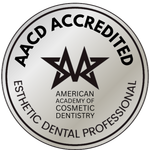Ready to come visit us?
NEW PATIENTS
RETURNING PATIENTS
Exceptional dental care. Incredible results.
Your smile is your introduction to the world. To keep it healthy — and confident — trust the gentle experts at Koczarski Family & Aesthetic Dentistry.
We provide highly personalized care to your dental experience. Advanced technology coupled with innovative techniques bring unequaled results to your well-being. But most importantly, honesty and compassion create a solid foundation for a healthy partnership with you.
Whether you need consistent preventive care or a new smile, we’ll tailor a customized plan that feels right to you. From Invisalign to veneers, from comfortable root canals to other cosmetic improvements...discover how superb dentistry enhances your life.
Your search for a Woodinville or Seattle dentist ends with a simple call to our friendly team today!
Family Dentistry

We love serving patients of all ages. Our team enjoys helping even your youngest family member grow into a healthy adult. Welcome to a dental home for your and your whole family.
Cosmetic Dentistry

Dr. Koczarski maintains a constant dedication to the finest advanced dental education. You can be confident in his unmatched ability to create impressive results with modern dentistry.
Restoration Dentistry

Your teeth, muscles, and jaw joints function together to play a vital role in your overall health. Dr. Koczarski blends the harmony of your chewing system for ultimate function and comfort.
Check out our blog for dental care tips & answers to common questions.










